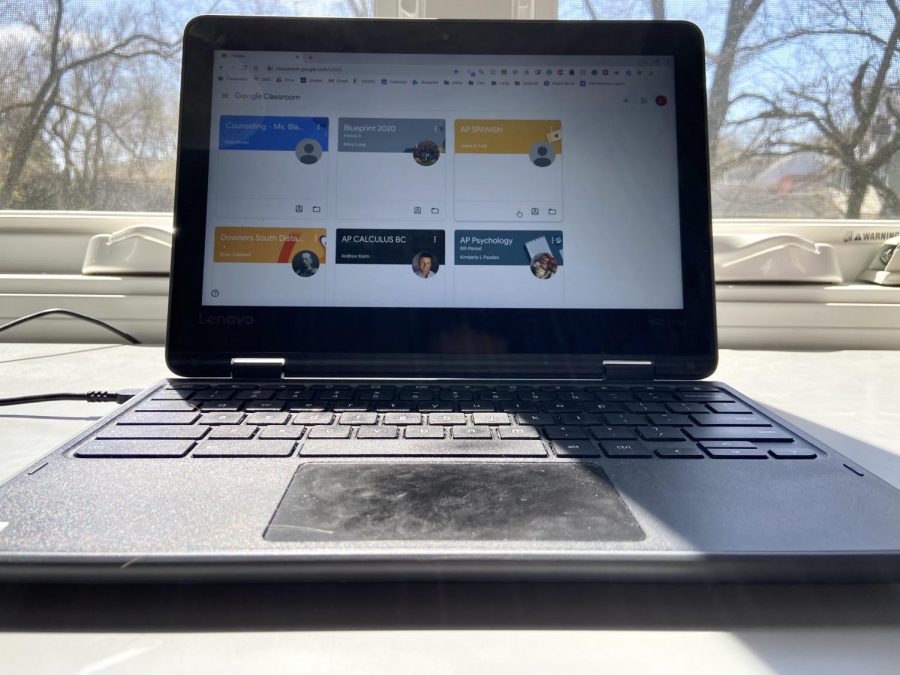Remote learning reviewed
Per new District 99 guidelines, teachers now post all of their assignments to Google Classroom.
This past fall, I wrote an editorial for the print edition of Blueprint on e-learning and my concerns with the new program. For most of the year, it looked as though these worries wouldn’t have to be dealt with until next year as we hadn’t had any snow days.
Then coronavirus hit.
Suddenly, our lives were upended and school would have to shift from the classroom to our Chromebooks. Both teachers and students had to adapt to this new normal which came with a steep learning curve. Teachers were forced to translate weeks of in-class lesson plans to a digital platform in just a few days.
In the first two weeks of e-learning, teachers used a variety of platforms to communicate and teach students. Some teachers used the Google Classrooms they had already set up while others gave students assignments via email with students sending pictures of their work back. To many, including myself, this felt overwhelming and disorganized as students now had to keep track of all their classes on several different platforms.
As was promised back in the fall, however, the district continued to “review and revise.”
Since Spring Break, teachers have now been forced to use Google Classroom as their primary method of assigning work and giving daily plans. Additionally, each teacher has now posted their office hours where students can quickly reach their teachers to ask any questions about the curriculum. Both of these have fostered clearer communication between teachers and students, making e-learning feel more like a typical school day.
In my original critique of e-learning, I focused primarily on two things: the length and content of work assigned. Overall, work has been manageable but not overwhelming as well as seeming to be productive to the learning process. What I had neglected, however, was the effect of learning remotely, without instant access to a teacher and classmates.
In these first few weeks of e-learning, it has become apparent how truly essential teachers and classmates are to the learning process. Unfortunately, there’s no easy solution to this problem as long as learning remains from home. While more and more teachers are utilizing video conferencing platforms like Zoom, there is no equal substitute for the collaboration of students and in-person help of teachers.
For me, the school day is so much more than just the content taught in class. Without the ability to work through problems with other students and hear the class conversation about the topic, there’s no way my understanding, or likely anyone else’s for that matter, will be to the same level as it would’ve been in a traditional classroom.
Altogether though, the district has made the best out of a bad, yet unavoidable situation. With school remaining remote for the rest of the school year, the district must continue to listen to students in order to make e-learning as effective as possible, even if that will never be equivalent to a normal school day.


